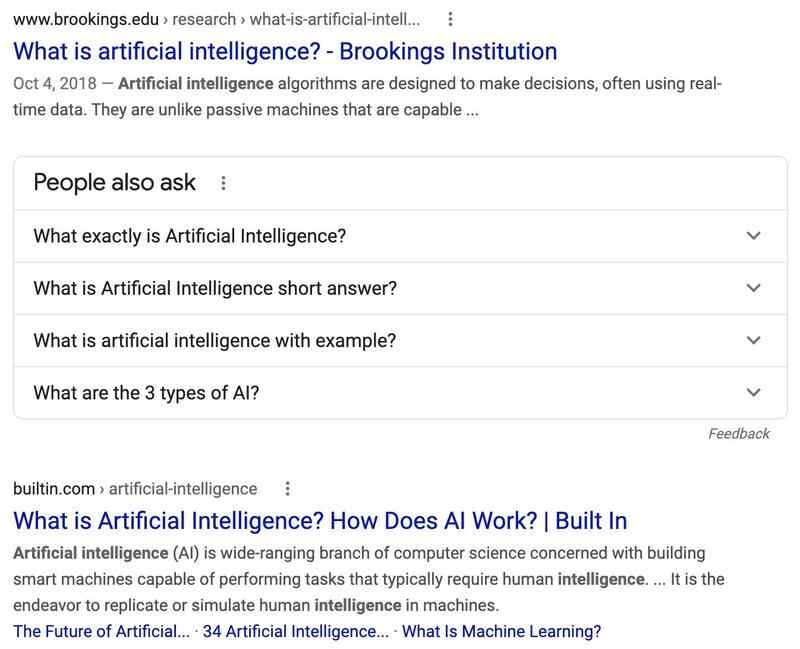The ever-evolving SERP layout has a new twist. Since the beginning of online search if you input a search query, you see the results listed in one of the expected SERPs layouts. If you click on a listing and go to the site, you can consume that content. Since February 2018 if you click the back button on your browser and return from the selected page to the SERP, Google may pop down the new "People Also Ask" box.
Here is my query and SERP: https://www.google.com/search?q=examples+of+ai+in+marketing+automation
Users can click the x in the upper-right corner of the pop-down menu to close it. When you click on one of the suggested links, it will load that query into a new SERP known as People Also Ask. See it in action in this screen capture video.

What are the implications of what people also search for?
Like all universal SERP elements, the new feature consumes space above the fold. In this case it pushes one more listing below the fold. However, the user traffic that bounces back from a listing click and visit is far less than the original query's volume. The most likely behavior of a user returning to the SERP would be to select another listing from the original SERP results because they better match the original query. After satiating the intent of the original search, a small portion might move on to related queries.
What are the opportunities of this new function?
Google is presenting additional topics which are logically related to the original topic, yet they are different enough to exist in a different SERP. Brands can generate content ideas from this new feature, create content, optimize it, and gain rank and the secondary traffic it could provide.
Should you move aggressively to use this?
We recommend that you familiarize yourself with all the People Also Ask changes in the SERPs so you can answer questions from your team. If you see an interesting related topic you would like to cover, first input it into Data Cube to make sure the query volume is significant enough to merit the time you will invest in the content. Google is always testing new ways to address search intent. That is why some people in some locations will see the new features and some will not. If the test meets Google's standards for user experience and journey maps, they will roll it out to whole regions and countries. Right now, the behavior is happening on only a portion of results. BrightEdge is always monitoring industry trends and innovating in lock-step with with changes. We actively share these insights with the BrightEdge customers and the wider community. Learn more about SERPs and universal SERP elements in this post.


